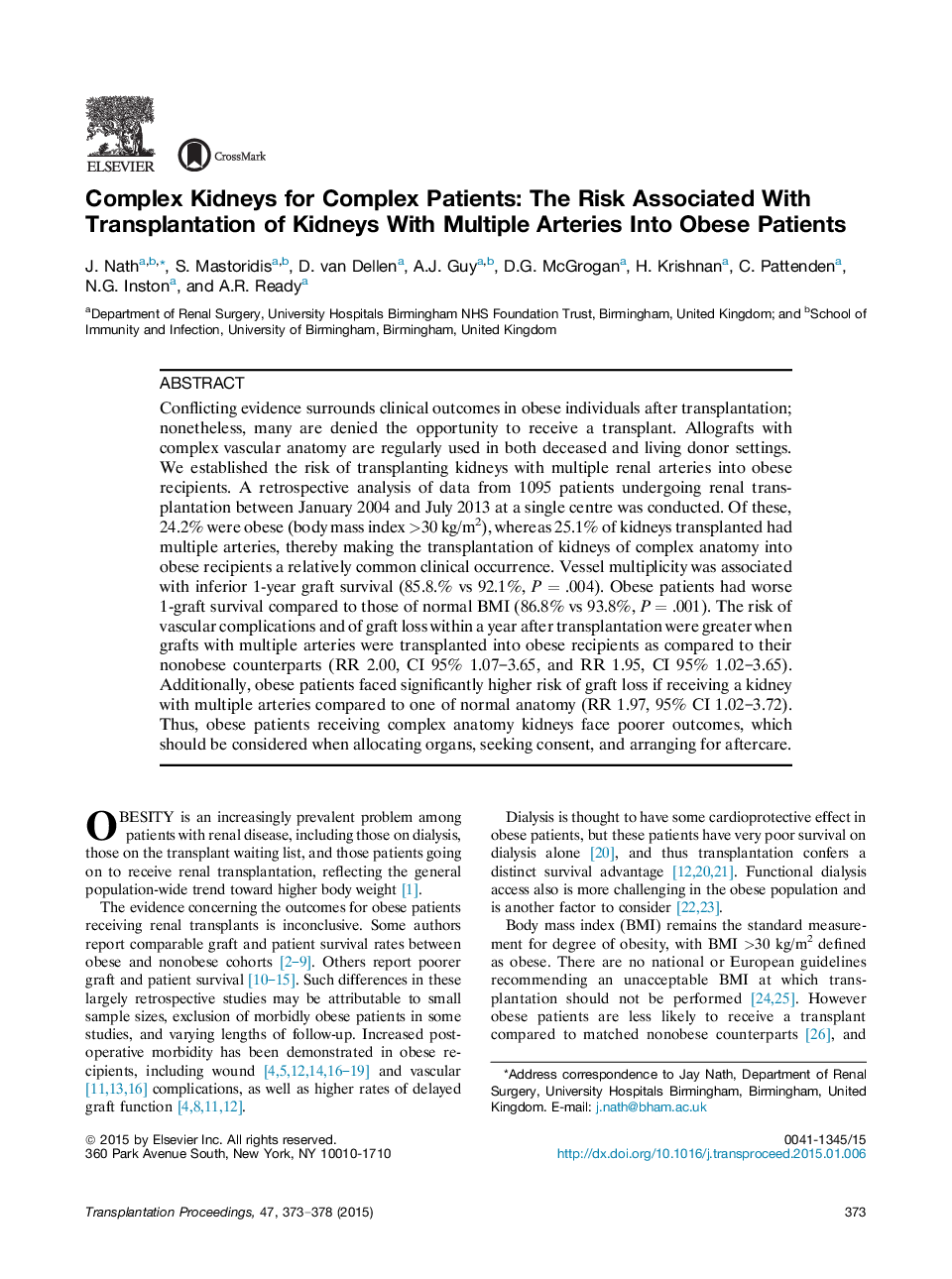| Article ID | Journal | Published Year | Pages | File Type |
|---|---|---|---|---|
| 4257612 | Transplantation Proceedings | 2015 | 6 Pages |
•We analyze the impact of complex graft vasculature on obese kidney transplant recipients.•Renal arterial multiplicity is detrimental to graft survival.•Obese recipients are at higher risk of poor outcomes if receiving grafts of complex vasculature.•Our analysis aids informed clinical and patient decision-making with regard to organ allocation.
Conflicting evidence surrounds clinical outcomes in obese individuals after transplantation; nonetheless, many are denied the opportunity to receive a transplant. Allografts with complex vascular anatomy are regularly used in both deceased and living donor settings. We established the risk of transplanting kidneys with multiple renal arteries into obese recipients. A retrospective analysis of data from 1095 patients undergoing renal transplantation between January 2004 and July 2013 at a single centre was conducted. Of these, 24.2% were obese (body mass index >30 kg/m2), whereas 25.1% of kidneys transplanted had multiple arteries, thereby making the transplantation of kidneys of complex anatomy into obese recipients a relatively common clinical occurrence. Vessel multiplicity was associated with inferior 1-year graft survival (85.8.% vs 92.1%, P = .004). Obese patients had worse 1-graft survival compared to those of normal BMI (86.8% vs 93.8%, P = .001). The risk of vascular complications and of graft loss within a year after transplantation were greater when grafts with multiple arteries were transplanted into obese recipients as compared to their nonobese counterparts (RR 2.00, CI 95% 1.07–3.65, and RR 1.95, CI 95% 1.02–3.65). Additionally, obese patients faced significantly higher risk of graft loss if receiving a kidney with multiple arteries compared to one of normal anatomy (RR 1.97, 95% CI 1.02–3.72). Thus, obese patients receiving complex anatomy kidneys face poorer outcomes, which should be considered when allocating organs, seeking consent, and arranging for aftercare.
